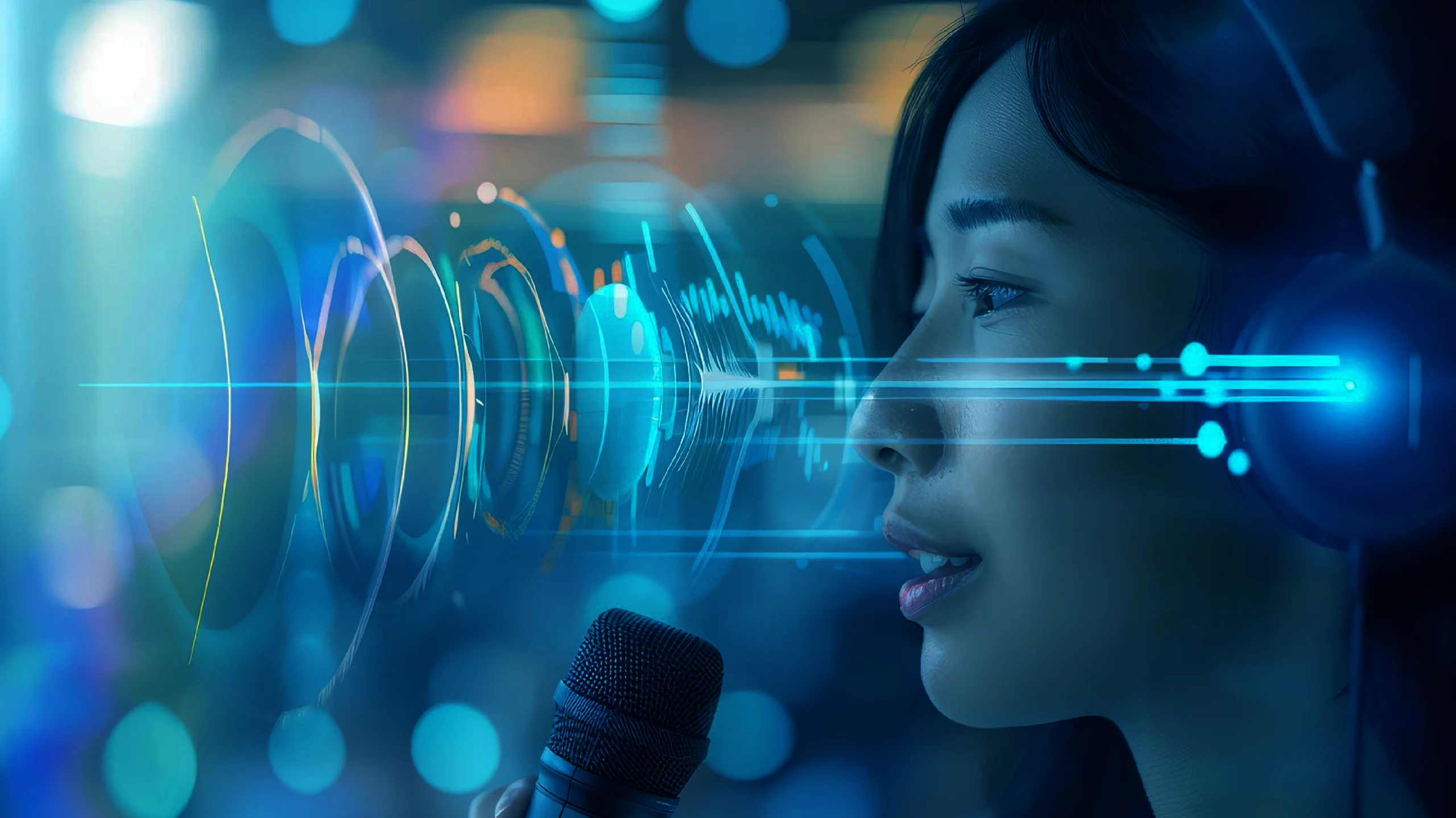In recent years, AI technology has revolutionized many aspects of content creation, with AI-generated videos standing at the forefront of this transformation. Two key developments in AI video creation—voice cloning and lip sync—have become crucial for improving the quality and realism of digital content. In this article, we will dive into these technologies, explaining how they work, their applications, and their impact on video production.
What is Voice Cloning?
Voice cloning is a process that uses machine learning algorithms to replicate a person’s voice. By analyzing hours of audio data from a specific individual, AI systems can generate synthetic voices that sound nearly identical to the original speaker. This process not only mimics the vocal tone, pitch, and cadence of a person’s voice but can also replicate their speech patterns, making it sound as natural as possible.
Voice cloning relies on deep learning models that are trained on large datasets. These models are capable of capturing the nuances of speech, including emotional tone and accent. The result is a voice that can speak any text input in the same way as the original person, making it a powerful tool for creating personalized content.
How Does Voice Cloning Work?
Voice cloning typically involves several steps:
- Data Collection: To create an accurate voice clone, the AI system requires a large volume of speech data from the individual whose voice is being cloned. This data can include recordings of conversations, speeches, or other forms of speech.
- Training the Model: Once the data is collected, the machine learning model is trained on this dataset to learn the unique features of the voice. The system examines patterns in the audio, including pitch, tone, rhythm, and inflection.
- Synthesis: After the model has been trained, it can generate synthetic speech by converting any given text into speech that closely matches the original speaker’s voice.
Voice cloning technology is making a significant impact in various fields, from entertainment and gaming to customer service and accessibility. It enables content creators to generate voiceovers without needing the original speaker for every recording. This is particularly useful for creating videos in different languages or producing content in large quantities without investing in multiple voice actors.
Applications of Voice Cloning
Voice cloning has a variety of uses across different industries. Some of the most notable applications include:
- Entertainment and Media: In film and television production, voice cloning can be used to create realistic dialogue for animated characters or to resurrect voices of famous actors who have passed away. It also allows for dubbing in multiple languages without requiring actors to re-record lines, saving time and cost.
- Gaming: Video games can benefit from voice cloning by using it to provide more dynamic and personalized character interactions. Players can interact with characters whose voices are generated in real-time, adding a new layer of realism and immersion.
- Assistive Technology: For people who have lost their ability to speak due to illness or injury, voice cloning technology can help restore their ability to communicate. By cloning their original voice, AI can create a synthetic voice that sounds just like them, helping them maintain a sense of identity.
- Customer Service: AI-driven voice assistants and chatbots can use voice cloning to offer personalized experiences. Customer service representatives can be simulated using the cloned voice, creating a more natural interaction for customers.
What is Lip Sync in AI Videos?
Lip sync, or lip synchronization, is the process of matching the movement of a character’s lips to the sound of their voice in a video. It is an essential component in animated videos, especially those with speaking characters, as it enhances the believability and immersion of the content. In AI-generated videos, lip sync is crucial for making the video appear as though the character is speaking in real-time, with the mouth movements aligning perfectly with the audio.
In the past, lip syncing was done manually by animators, who had to painstakingly match the lip movements to the audio. However, AI technology has dramatically improved the efficiency and accuracy of this process. Today, AI can automate lip sync in videos, making it easier to produce high-quality content in less time.
How Does Lip Sync Work in AI Videos?
AI-based lip sync technology uses machine learning and computer vision to detect and match mouth shapes to the sounds in the audio. The process typically involves the following steps:
- Audio Analysis: The AI system first analyzes the audio to understand the phonetic components, such as the specific sounds and syllables being pronounced.
- Facial Modeling: Using facial recognition and computer vision, the AI system models the movement of the character’s face and mouth. It creates a digital representation of how the lips should move to match the sounds in the audio.
- Animation: Finally, the AI system animates the character’s lips, ensuring they are synchronized with the audio. This process can also adjust the facial expressions and gestures to match the tone of the speech.
The result is a seamless and realistic lip sync that makes the character appear as though they are genuinely speaking the words. This technology is essential for creating lifelike avatars, animated characters, and virtual influencers who engage audiences with authentic, believable speech.
Applications of Lip Sync in AI Videos
Lip sync technology has many applications in the world of AI-generated videos. Some of the most prominent uses include:
- Dubbing and Localization: AI-powered lip sync makes it easier to dub videos in different languages while ensuring the lip movements match the translated dialogue. This is especially useful for international markets where content needs to be localized.
- Virtual Influencers: Virtual influencers, digital avatars who interact with audiences on social media platforms, use AI lip sync to create more engaging and relatable content. These virtual personalities can now “speak” directly to their followers with highly realistic facial expressions and lip movements.
- Education and Training: In e-learning and training programs, AI-generated lip sync can create realistic educational videos where instructors or avatars provide lessons. This enhances the learning experience by making the video more engaging and interactive.
- Interactive Entertainment: AI-driven lip sync is also used in interactive media, such as video games and virtual reality experiences, where characters respond to players in real-time with synchronized lip movements. This helps create a more immersive experience for users.
The Synergy Between Voice Cloning and Lip Sync in AI Videos
The combination of voice cloning and lip sync technology represents a significant leap forward in AI video production. When used together, these technologies create fully immersive and personalized AI-generated videos. For example, imagine a situation where an AI character is speaking in a cloned voice, and the lips are perfectly synchronized with the audio. This could be used in everything from animated films and video games to virtual assistants and digital marketing.
Voice cloning enables the character to speak in a natural-sounding voice, while lip sync ensures that the character’s facial expressions match the audio. Together, they make it possible to create highly believable and engaging content without the need for traditional voice actors or animators.
This synergy also opens up new possibilities in entertainment and advertising. Brands can create virtual spokespeople who sound just like real people, with lip movements that sync seamlessly with their speech. This can lead to more personalized and interactive customer experiences, as well as reduce the need for expensive and time-consuming traditional production methods.
Future of Voice Cloning and Lip Sync in AI Videos
As AI technology continues to evolve, the future of voice cloning and lip sync in videos looks promising. The increasing sophistication of deep learning models means that both voice cloning and lip sync will become even more realistic and efficient in the years to come.
In the near future, we may see voice cloning and lip sync technology becoming standard tools for video creators, enabling anyone to produce professional-quality content without the need for specialized skills or equipment. For instance, AI video generators might allow creators to automatically generate videos with a cloned voice and perfectly synchronized lips, cutting down on production time and costs.
Moreover, these technologies will likely become more accessible, with tools and platforms designed for both amateur and professional content creators. Services like AI Video Translator and AI video generator are already beginning to offer these features, making it easier for creators to produce content at scale.
Conclusion
Voice cloning and lip sync technology are transforming the way videos are created and consumed. These AI-powered innovations provide content creators with the ability to generate realistic, personalized, and immersive video experiences. As the technology continues to advance, we can expect even more groundbreaking applications in industries ranging from entertainment to education, marketing, and beyond.
Whether you are a filmmaker, game developer, educator, or marketer, understanding and leveraging these technologies will give you a competitive edge in the ever-evolving world of digital content creation. As the possibilities continue to grow, one thing is clear—voice cloning and lip sync are here to stay, and they are reshaping the future of video production.

